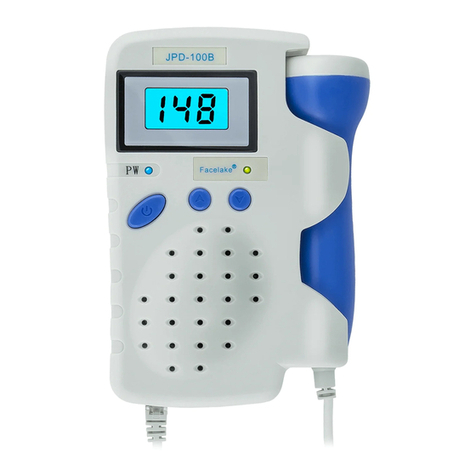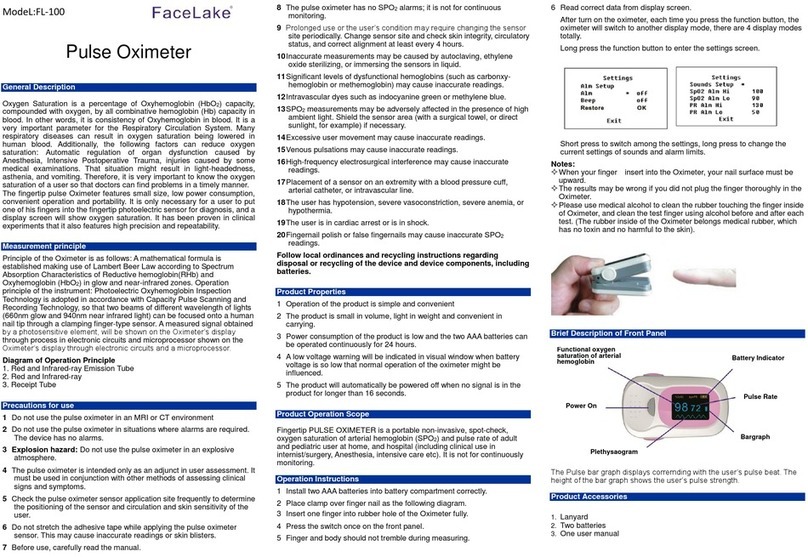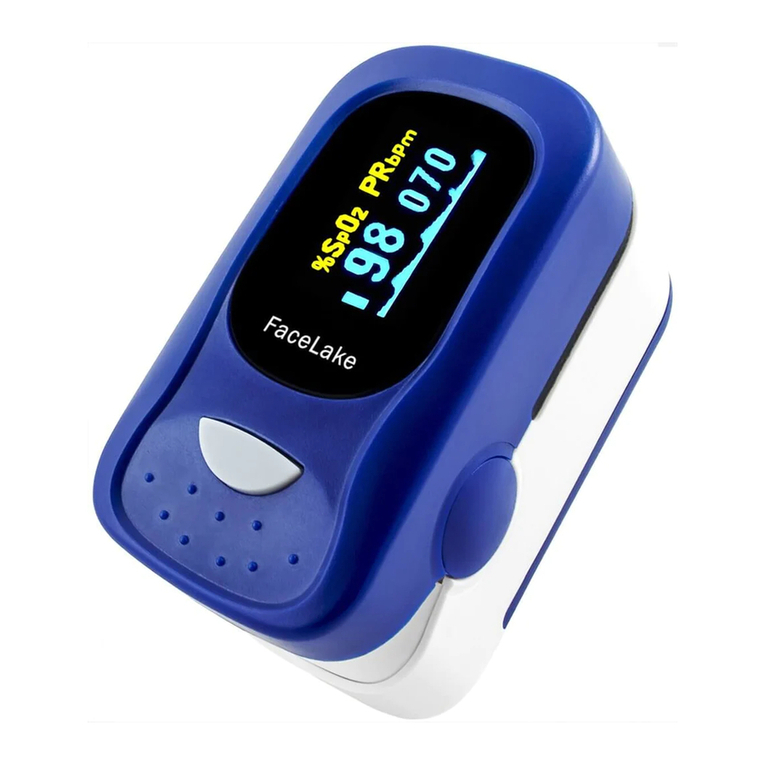the menu interface shown as figure 7. Users can
adjust the setting through the main menu, such as
data storage. The specific operation methods are as
the following:
Figure 7. Main Menu Interface
a) Data storage setting
This instrument has the ability to store 24 hours
worth of data. It can store the measured pulse rate
and SpO2value accurately, transfer the data to the
computer, display the data and print reports (with the
included SpO2Software - Green Heart)
a. On the main menu interface, short press the
button to select “Record”, then long press the button
to choose whether store the data or not, choose “on”
to permit storing, choose “off”to forbid storing.
b. If the data storage function is being turned on,
when return to the measuring interface, a flashing
yellow dot would appear on screen, which means the
device is in a state of storing.
c. In the state of storing, the device is on
measuring interface, the sign "Recording" would
appear on the screen in 30 seconds, and then the
screen will be automatically shut down, only a
flashing yellow dot appear on screen.If short press
the button at this moment, the sign "Recording"
would appear on the screen, and then the screen will
be automatically shut down again; if long press the
button, the device would return to the measuring
interface.
d. If turning on the data storage function, the
former data storage will be automatically removed.
e. In the state of data storing, after the screen is
automatically shut down, the pulse sound indication
would be off for saving power.
f. When the storage space is full, it displays
“Memory is full”on the screen, and then shut down
in a few seconds. But it will still display “Memory is
full”by the next time you turn on the device on the
purpose of warning the user, and a few seconds later
enter the measuring interface.
b)Uploading the data to the PC after recording
a. Please connect the device with computer by the
data line which is equipped with the device, then
double click "SpO2 Review" icon to open"SpO2
Review" program, click the ‘New Session’Icon in
the software, enter the patient data and then click
‘ok’. The Software will then display “device






























